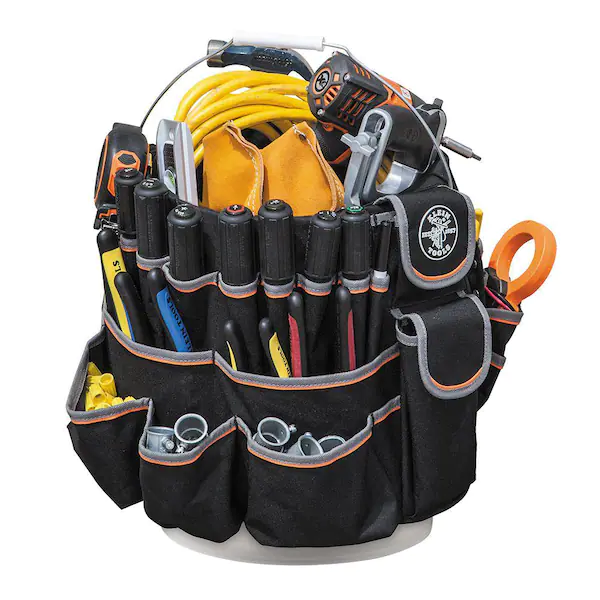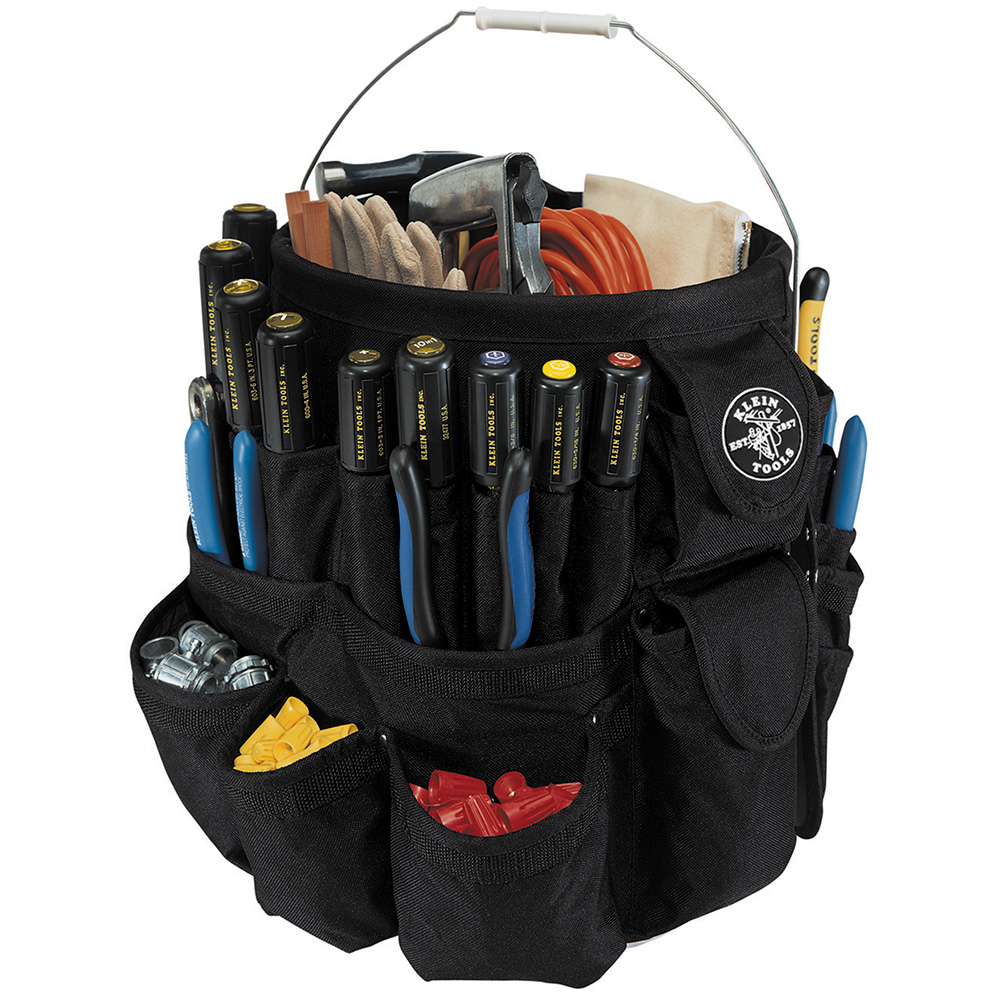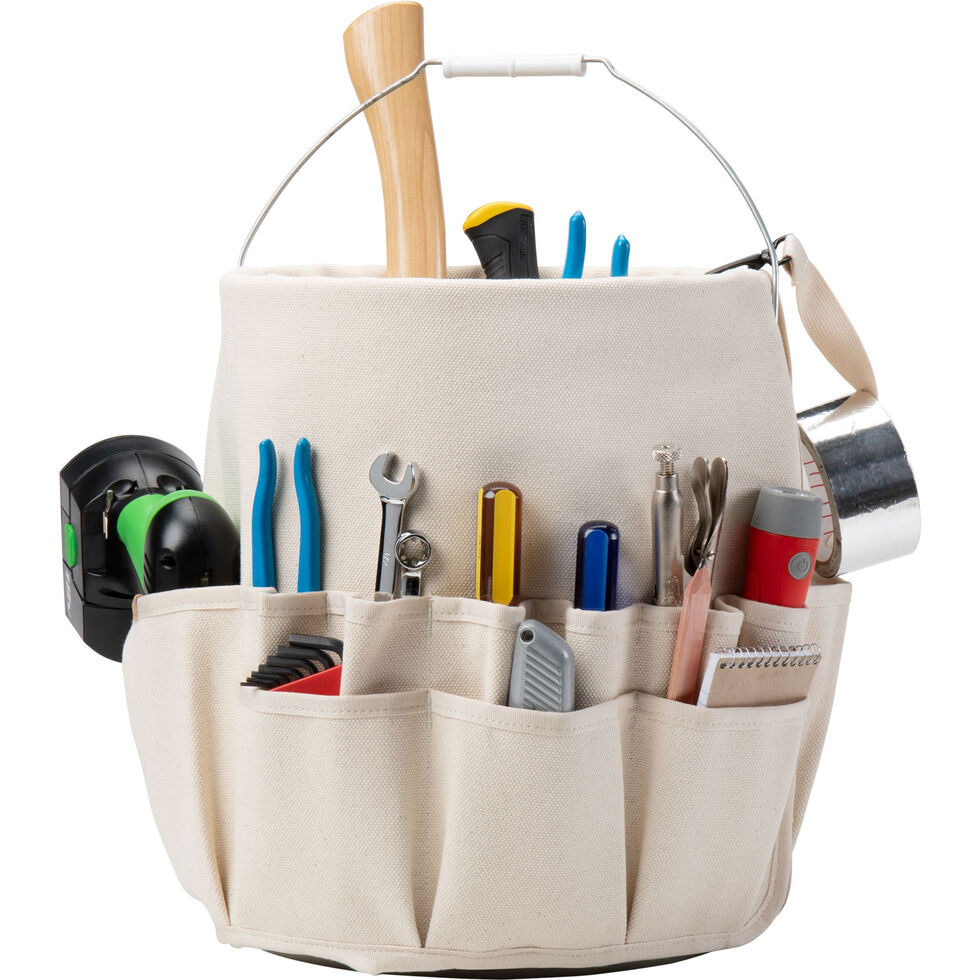
The Guide to the Bucket Tool Bag: Everything You Need to Know
Introduction
A bucket tool bag is a versatile and practical solution for carrying and organizing tools and supplies for various applications. These bags are specifically designed to fit over a standard five-gallon utility bucket, providing a sturdy and portable storage solution. They are popular among home DIYers, contractors, and professionals in various trades for their convenience and functionality.
In the world of construction and home improvement, having the right tools at your disposal is essential. Whether you’re a professional tradesperson or a DIY enthusiast, having a reliable and organized way to transport your tools can make all the difference in the efficiency and success of your projects. One such solution is the bucket tool bag, a versatile and practical tool storage option that provides a convenient way to carry and access your essential tools. In this comprehensive guide, we’ll explore the various features, benefits, and uses of bucket tool bags, as well as provide expert tips on choosing the right one for your needs.
Part 1: The Benefits of Using a Bucket Tool Bag
Level 1: Versatility
Bucket tool bags are incredibly versatile and can be used in a wide range of settings, from construction sites to home improvement projects. They are designed to fit around a standard 5-gallon bucket, providing a sturdy and stable base to hold your tools while on the go. This design allows for easy access to your tools and keeps them organized and within reach at all times.
Level 2: Organization
One of the main benefits of using a bucket tool bag is the level of organization it provides. Many bucket tool bags come with multiple pockets and compartments, allowing you to store a variety of tools and accessories in an orderly manner. This makes it easy to find and retrieve the tools you need, saving time and frustration on the job.
Part 2: Features to Look for in a Bucket Tool Bag
One of the key features of a bucket tool bag is its spacious and well-organized interior. These bags typically offer a variety of pockets, loops, and compartments for organizing a wide range of tools and accessories. This includes small hand tools, power tools, fasteners, tapes, and other supplies needed for a project. The design of the bag ensures that everything is easily accessible and securely stored, reducing the time and effort required to find and retrieve specific tools.
Level 1: Durability
When choosing a bucket tool bag, it’s important to consider the durability of the materials used. Look for a bag made from high-quality, heavy-duty fabrics and reinforced seams to ensure it can withstand the rigors of regular use in a demanding work environment.
Level 2: Comfortable Carrying Options
Another important feature to look for in a bucket tool bag is comfortable carrying options. Many bags come with padded shoulder straps or handles for easy transport, as well as adjustable straps to fit a variety of bucket sizes. This ensures that you can carry your tools comfortably and securely, even over long distances or rough terrain.
Part 3: Uses of a Bucket Tool Bag
Level 1: Construction Sites
Bucket tool bags are commonly used in construction settings, where the need for organized and easily accessible tools is paramount. With a bucket tool bag, construction workers can keep their tools close at hand while working at height or in tight spaces, reducing the risk of accidents and increasing productivity.
Level 2: Home Improvement Projects
Bucket tool bags are also a valuable asset for the DIY enthusiast tackling home improvement projects. Whether you’re working on a small repair or a major renovation, a bucket tool bag can help keep your tools organized and easily accessible, making your project more efficient and enjoyable.
Part 4: Tips for Choosing the Right Bucket Tool Bag
Level 1: Consider Your Needs
Before choosing a bucket tool bag, it’s important to consider your specific needs and the types of projects you typically work on. Think about the size and variety of tools you need to carry, as well as any additional features or storage compartments that would be beneficial for your workflow.
Level 2: Read Reviews and Compare Options
To ensure you’re getting the best bucket tool bag for your needs, take the time to read reviews and compare different options. Look for feedback on durability, comfort, and overall functionality to help guide your decision.
Part 5: Maintenance and Care of Your Bucket Tool Bag
Level 1: Regular Cleaning
To keep your bucket tool bag in top condition, it’s important to clean it regularly. Remove any dirt, debris, or spilled liquids from the bag and wipe down any soiled areas with a mild detergent and a damp cloth.
Level 2: Inspect for Wear and Tear
Regularly inspect your bucket tool bag for any signs of wear and tear, such as frayed stitching or damaged pockets. Address any issues promptly to prevent further damage and ensure the longevity of your bag.
Part 6: Durability and Versatility
Level 1: Durability
A high-quality bucket tool bag is made from durable materials such as heavy-duty canvas or nylon. These materials are designed to withstand the wear and tear of daily use, ensuring that the bag holds up against the weight of tools and frequent movement.
Level 2: Versatility
Bucket tool bags are versatile in their design, offering multiple pockets and compartments for organizing a wide range of tools. They also often feature removable dividers and organizers, allowing users to customize the interior space to accommodate different types of tools and equipment. This versatility makes them a convenient and practical option for various tasks and projects.
Part 7: Comfort and Convenience
Level 1: Comfort
Many bucket tool bags are featuring padded shoulder straps and handles to make carrying heavy loads more comfortable. This ensures that users can transport their tools and equipment with ease, reducing strain and fatigue on the body during prolonged use.
Level 2: Convenience
Bucket tool bags are designed for convenience, with features such as zippered pockets, exterior tool loops, and quick-access compartments. This makes it easy for users to retrieve and store tools while on the job, saving time and effort. Additionally, the bucket design allows the bag to sit securely on the ground, keeping tools within easy reach and minimizing the risk of spills or tip-overs.
Part 8: Organization and Accessibility
Level 1: Organization
Bucket tool bags are designed to keep tools and equipment organized, with multiple pockets, pouches, and loops for storing a variety of items. This allows users to keep their tools sorted and easily accessible, preventing the frustration of rummaging through a jumble of loose tools.
Level 2: Accessibility
With their open-top design and accessibility features such as reinforced tool loops and wide-mouthed pockets, bucket tool bags make it easy for users to quickly grab the tool they need without fumbling through clutter. This accessibility saves time and minimizes the risk of misplacing or losing tools during a job.
Conclusion
Furthermore, the bucket tool bag offers convenience and mobility. By fitting over a five-gallon bucket, it provides a stable and portable platform for carrying tools and supplies to and from the job site. Overall, a bucket tool bag is a practical and efficient tool storage solution for professionals and DIY enthusiasts alike. With its organized interior, protective features, and portability, it provides a reliable way to keep tools and supplies organized and accessible for a wide range of projects.
Whether used in construction, carpentry, plumbing, electrical work, or other trades, a bucket tool bag is a valuable asset for anyone in need of a reliable and convenient storage solution. A bucket tool bag is a valuable and practical addition to any tool arsenal, providing a convenient and organized way to transport your essential tools. With the right bucket tool bag by your side, you can tackle any project with confidence and ease.


